Flowers have long held a special place in mythology. Across civilizations, they were more than beautiful plants; they carried deep symbolic meanings, represented gods and goddesses, and explained natural events. Ancient cultures often used flowers to express human emotion, divine punishment, or eternal love.
In Greek mythology, flowers often emerged from dramatic transformations. The gods turned mortals into blossoms to preserve their memory, reward devotion, or mark tragedy. The Romans followed similar traditions, connecting blooms to beauty, rebirth, and ritual celebration. Farther east, in Hindu and Japanese mythology, flowers like the lotus and cherry blossom symbolized purity, enlightenment, and the fleeting nature of life.
Mythological flowers tell stories that bridge nature and legend. From the blood of fallen heroes to the tears of grieving goddesses, these blooms remind us how people once explained the mysteries of life and death. The stories behind these flowers continue to shape how we use them today in art, literature, and ceremonies.
Whether you’re fascinated by Ancient Greek flowers, Ancient Roman flowers, or symbolic blossoms from Egypt, Asia, and the Americas, these legends reveal the timeless bond between nature and storytelling.
1. Narcissus

The story of Narcissus tells of a handsome youth who fell in love with his reflection and wasted away gazing into a pool. The gods transformed him into the narcissus flower as a lesson in vanity and self-love. This bloom symbolizes reflection, introspection, and the danger of obsession. Narcissus is said to have fallen in love with his own handsome reflection, as punishment from the gods for his selfishness and ignorance of the nymph, Echo, who loved him. When he died, the narcissus flower sprouted up in his place. In mythology, the narcissus now represents both vanity and unrequited love.
2. Hyacinth

Credit Wiki Commons: https://commons.wikimedia.org/wiki/File:Hyacinthus_%27Red_Magic%27_01.jpg
A member of the lily family, the hyacinth flower gets its very name from a myth in this case, the beautiful Spartan Hyacinthus. In Greek myth, the young Hyacinthus died accidentally and the god Apollo transformed him into the hyacinth flower. It symbolizes friendship, love, and grief.
As told by the Greek god Apollo, who loved Hyacinth, the two were playing a truly bromantic game of discus when the discus accidentally struck Hyacinthus and killed him. Some versions of the story say the discus was blown awry by the wind god Zephyr, who also loved Hyacinthus (and clearly needed to work out some jealousy issues). As Apollo wept over Hyacinthus, a flower sprang from the ground where he’d died, and Apollo named it after him.
3. Anemone
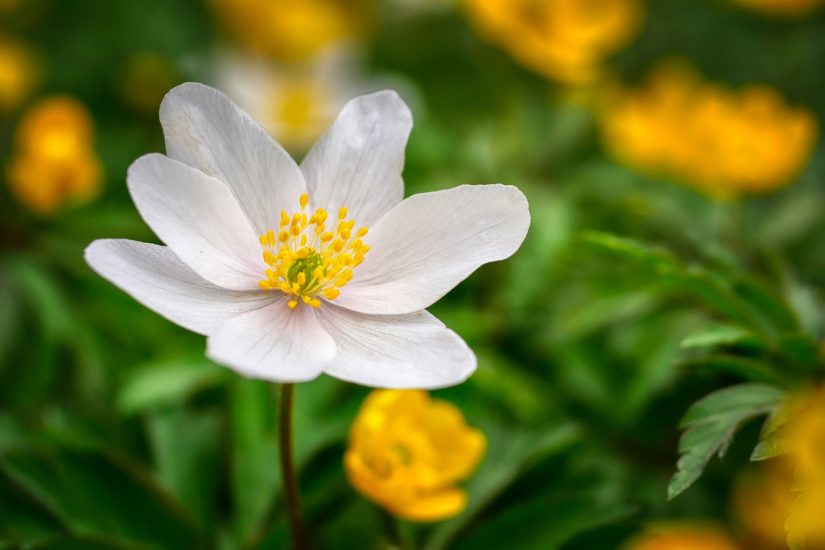
Often called the “windflower,” the anemone grew where the blood of Adonis fell, according to myth. It represents fleeting life, mourning, and remembrance. Belonging to the same family as the uber-hip ranunculus, also has rich folklore stemming from who else? The Greeks.
The story goes that Adonis, the huge crush of goddesses everywhere, was killed by a wild boar while hunting. In keeping with the Greek tradition of blaming flowers in mythology on the deaths of hotties, the anemone is said to have sprung up where Adonis’ blood had spilled. Other versions of the story say the anemone was a white flower already in bloom, but turned red from Adonis’ blood.
4. Rose

The rose has been one of the most meaningful flowers in mythology. The Greeks linked it to Aphrodite, goddess of love, one Greek legend says that the first roses grew from Aphrodite’s tears, and another says they got their red color from the blood from Aphrodite’s foot when she stepped on a thorn dropped by Cupid. Another story says the rose was created by Chloris, a nymph who became the flower goddess Flora and is thought to have transformed fallen heroes into some of the other flowers in this list.
While Romans associated it with Venus. Roses were used in Roman feasts and funerals, connecting them to both pleasure and remembrance. They remain enduring symbols of love, secrecy, and devotion.Outside of Greek mythology, roses symbolize purity and motherly love, and are often associated with the Virgin Mary. Learn more about Ancient Roman flowers.
5. Lotus
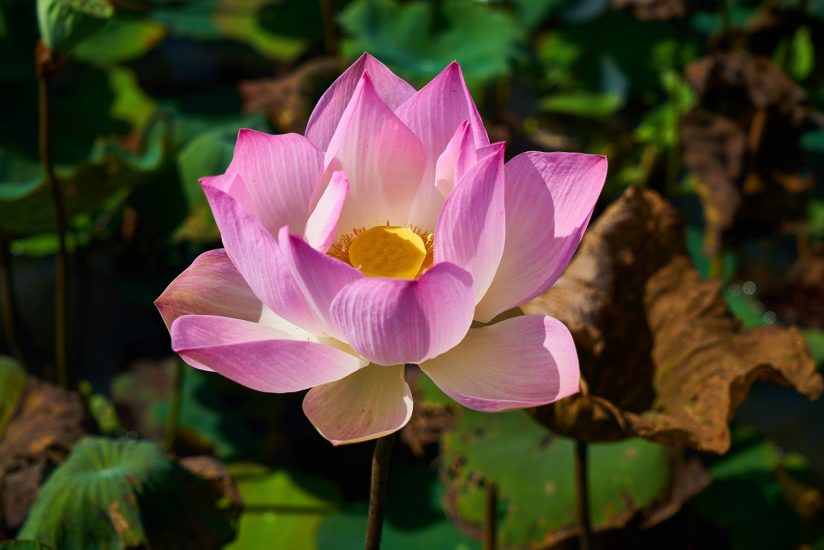
The lotus has deep spiritual meaning across several ancient cultures. In Egypt, the sun god Ra was said to have emerged from a giant lotus at the dawn of creation. In Hinduism, it represents purity and divine beauty and is sacred to the deities Vishnu and Lakshmi. The lotus’s ability to rise unstained from muddy waters makes it a powerful symbol of rebirth. Confucius wrote, “I love the lotus because while growing from mud, it is unstained.” In Buddhism, the lotus stands for the purity of mind and body and legend has it that Gautama Buddha’s first steps caused sacred lotus flowers to appear. According to yoga traditions, the lotus represents the potential of individuals to harmonize their inner energy through their chakras.
6. Peony

The peony is named after Paeon, a student of Asclepius, the Greek god of healing. When Asclepius grew jealous of his pupil, Zeus turned Paeon into a flower to save him. Peonies have since symbolized protection, healing, and compassion. In China, the peony has variously been called the King of Flowers and the Queen of Flowers for thousands of years. One legend has it that an Empress magically decreed all the flowers in her imperial garden to bloom. They all obeyed except the peony. After this defiance, the Empress banished the peony to the coldest reaches of the empire. Yet, the peonies still thrived and produced gorgeous blossoms. Thus, the Empress allowed the peonies to return, and thereafter they earned the title of Queen of Flowers. Li Bai, a legendary Chinese poet during the Tang Dynasty, famously wrote, “Floating clouds remind me of her clothes, and peonies her face.” Peonies earned their reputation for representing fame, prosperity, strength, and longevity.
7. Iris

Credit Wikimedia Commons: https://commons.wikimedia.org/wiki/File:Iris_ruthenica_(53400473640).jpg
Named for Iris, the Greek goddess of the rainbow and divine messenger of the gods, the iris flower symbolized communication and the link between heaven and earth. In Greek mythology, Iris carried messages from Mount Olympus to mortals, often traveling on rainbows. Because of her role, the flower was believed to connect the physical and spiritual worlds. Greeks planted irises on graves so the goddess would guide souls safely to the afterlife. The iris also represented hope, faith, and wisdom. Later, in ancient France, it inspired the fleur-de-lis, a royal emblem symbolizing light and purity.
8. Poppy
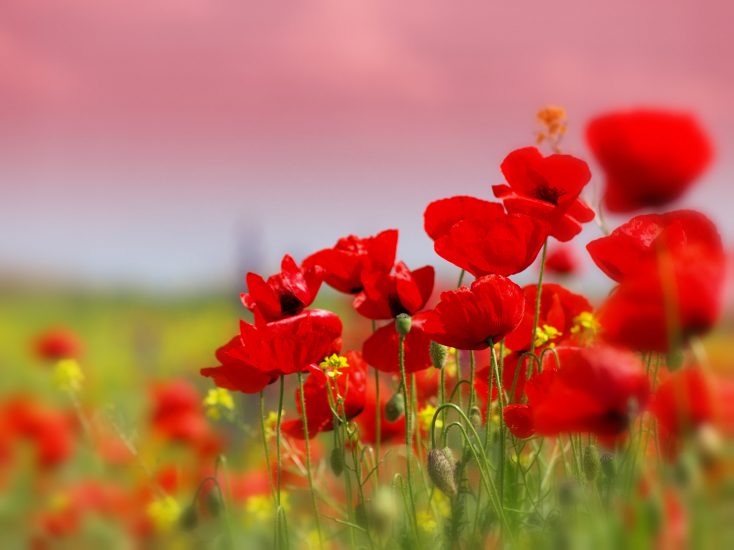
The poppy held powerful symbolism in both Greek and Roman mythology. It was sacred to Demeter, goddess of the harvest, and her daughter Persephone, queen of the underworld. When Persephone was taken by Hades, Demeter’s grief brought winter to the world. To ease her sorrow, poppies bloomed around her fields, symbolizing rest and the promise of rebirth. The poppy’s deep red hue came to represent both death and renewal. Romans associated the flower with Hypnos, god of sleep, and Morpheus, god of dreams, which led to the poppy’s connection with sleep and peace. Even today, poppies remain a universal emblem of remembrance for those lost in war.
9. Lily

In Greek mythology, the lily was said to have formed from the spilled milk of Hera, queen of the gods. As drops fell to Earth, they created the white lilies we know today. Because Hera represented motherhood and protection, the flower became a symbol of purity and maternal love. The lily also appeared in Roman traditions, where it was dedicated to Juno, the goddess of marriage. Later, Christian iconography adopted the lily as a symbol of the Virgin Mary’s purity and divine grace. The lily’s presence in both pagan and Christian traditions highlights its lasting connection to renewal and spiritual transformation.
10. Violet

The violet appears in several myths, each emphasizing modesty, humility, and remembrance. One Greek legend tells of a nymph pursued by Apollo, the sun god. To protect her virtue, she transformed into a small, fragrant violet hidden among the leaves. Another tale links the violet to Persephone, as a symbol of the arrival of spring after her return from the underworld. Romans used violets in funeral rites to honor the dead, believing the flowers represented the soul’s peaceful rest. Their modest beauty made violets a lasting emblem of faithfulness and everlasting affection.
11. Daffodil

The daffodil, known in mythology as a relative of the narcissus, also connects to the tale of Persephone. According to legend, she was picking daffodils in a field when Hades abducted her to the underworld. The bright yellow blooms later became symbols of new life and rebirth, marking her return to Earth each spring. In this way, the daffodil reflects the cycles of death and renewal. In later folklore, the flower came to represent hope and fresh beginnings, especially in Europe, where its early spring bloom signals the end of winter’s darkness.
12. Sunflower

The story of the sunflower comes from the Greek myth of Clytie, a water nymph deeply in love with Helios, the sun god. When Helios abandoned her for another, Clytie sat on the ground, gazing at the sun as it moved across the sky. After nine days, the gods took pity on her and transformed her into a sunflower, her face forever following the sun’s path. The flower came to represent devotion, loyalty, and unwavering affection, even in heartbreak. Across cultures, the sunflower has retained this meaning, symbolizing faith and admiration that endure through time.
13. Marigold

In Aztec mythology, the marigold was sacred to Tonantzin, the mother goddess, and played a vital role in rituals honoring the dead. When Spanish colonizers introduced Catholic traditions to Mexico, marigolds merged into the celebration of Día de los Muertos (Day of the Dead). Their golden petals were believed to light the way for spirits returning to visit their families. Marigolds came to symbolize eternal love, remembrance, and the bridge between life and death. The flower’s scent and vibrant color still serve as offerings in altars and graves during this annual celebration of ancestral bonds.
14. Chrysanthemum

The chrysanthemum holds special meaning in East Asian mythology. In China, it represents long life and rejuvenation. In Japan, it became a symbol of the imperial family and is associated with autumn, renewal, and dignity. The chrysanthemum’s relationship to mythology goes back millennia. Associated with Japan and China, each culture has a different myth associated with how they came to be found in Japan. Chinese legend holds that about 3,000 years ago, an emperor believed that a magic herb existed on Dragonfly Island in the Sunrise Sea (Japan). It was reputed that only youth could collect this magical herb. So the emperor sent a dozen young men and a dozen young women to the island with golden chrysanthemums to trade for the magic herb. Finding no magic herb, these youths stayed on the island and cultivated the chrysanthemum. According to Japanese legend, the god Izanagi and the goddess, Izanami, were sent to Earth. Izanami then created the gods of the mountains, seas, and winds. She dyed upon the creation of the god of fire. Missing his partner, Izanagi then traveled to the land of Black Night to try to recover Izanami yet he couldn’t find her and was chased by the Old Hag of Black Night. He eventually escaped back to earth and took a purification bath in the river. During this purification process, his jewels turned into flowers. His two bracelets became the iris and the lotus while his necklace became the chrysanthemum.
15. Camellia
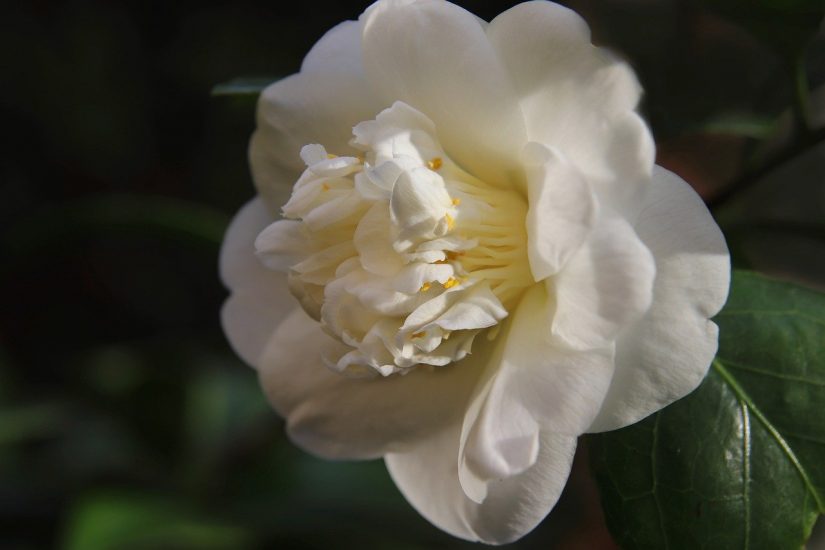
The camellia holds deep meaning in Japanese culture, where it is known as tsubaki. Its perfectly balanced petals and form made it a symbol of purity and refined beauty. However, the camellia also carried solemn meaning among the samurai, as the flower falls whole from its stem rather than petal by petal. This image reflected the samurai’s belief in an honorable and sudden death. In Chinese mythology, the camellia represents eternal love and unity, as its petals and leaves fall together, symbolizing two souls joined even in death. Across Asia, the camellia remains a timeless symbol of devotion and dignity.
16. Lavender

The lavender plant was treasured by the Romans for its sweet fragrance and cleansing properties. Its name comes from lavare, meaning “to wash.” Romans used lavender oil in baths, temples, and love rituals. In mythology, the flower was linked to Venus, goddess of love and beauty, and was said to attract affection and harmony. Over time, lavender also became associated with peace and protection, used to ward off evil spirits and bring calm. Today, its scent continues to represent purity, serenity, and healing qualities that trace back to its mythological roots.
17. Jasmine
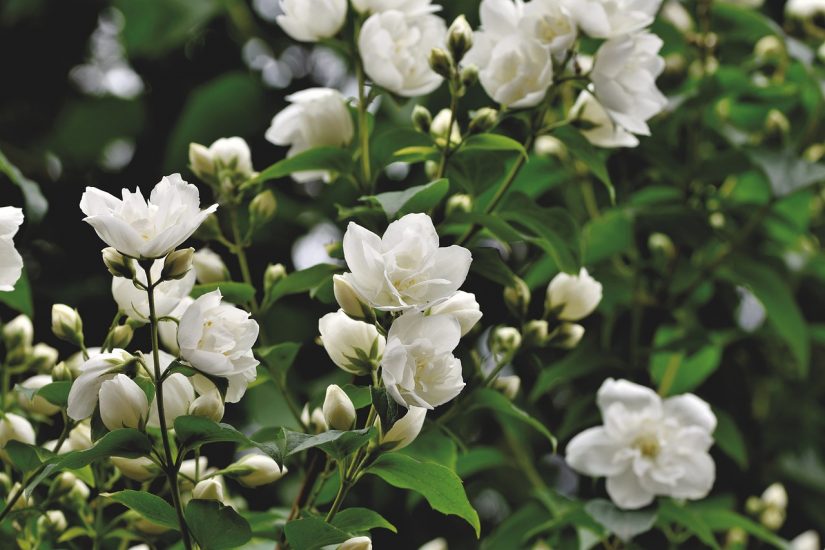
In Hindu mythology, jasmine is sacred to Kama, the god of love. Kama’s arrows were tipped with jasmine blossoms, which released a sweet fragrance meant to awaken desire and romance. The flower became a symbol of sensuality and divine beauty. In many South Asian cultures, jasmine garlands are used in weddings and religious ceremonies to represent purity, eternal love, and spiritual awakening. The flower’s fragrance was also believed to attract positive energy and bring blessings from the gods. Across centuries, jasmine has remained a potent emblem of affection and devotion.
18. Magnolia

The magnolia has ancient roots in Chinese legend, symbolizing strength, dignity, and feminine beauty. It was cultivated in imperial gardens as a tribute to noble women, representing purity of heart and perseverance. Some tales tell of magnolias blooming where great acts of courage occurred, honoring the resilience of the human spirit. In traditional Chinese medicine, the magnolia flower was also used to restore balance to the body, reinforcing its symbolic link to harmony and inner peace. Across East Asia, it remains a sign of purity, nobility, and grace.
19. Cherry Blossom (Sakura)

The cherry blossom is one of Japan’s most meaningful flowers. Rooted in Buddhist philosophy, it reflects the impermanence of life. The brief bloom period reminds people to appreciate beauty and live fully in each moment. It also holds dual meanings. The sakura represents beauty and violence, birth and death. In the Shinto tradition, many ancient and/or beautiful trees are considered sacred. It is said that spirits inhabit these trees and they are called kodama. Many kodama are cherry trees and are wrapped with rope. Misfortune will befall anyone who cuts the rope signifying these special trees.
Kodama can have their own myths associated with them. One famous cherry tree is called the Uba-zakura, or Milk Nurse Cherry Tree. It’s said this tree blossoms on the anniversary of when a devoted wet nurse sacrificed her life to protect the child under her care. Her soul lives on in the Uba-zakura tree.
20. Orchid
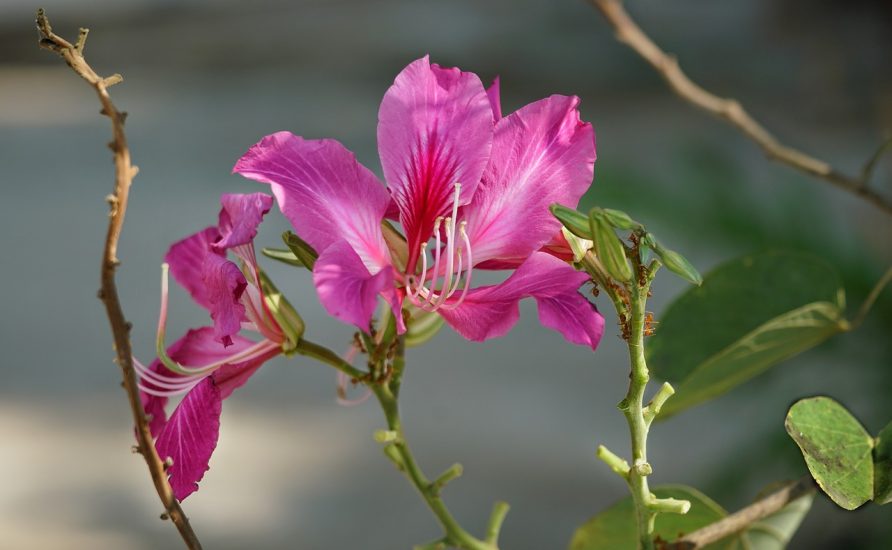
Of all the mythological flowers and their meanings, nothing embodies the Greek obsession with connecting flowers to male sexuality better than the orchid, whose very name comes from a Greek word for, ahem, certain man-parts. As such, the orchid in ancient Greece symbolized fertility and virility: fathers of unborn children were encouraged to eat large flowers if they desired a boy, and smaller ones if they desired a girl. The Aztecs believed it gave strength and was used in love potions. Orchids represent luxury, strength, and refined beauty.
21. Tulip

In Persian mythology, the tulip represents perfect and eternal love. The most famous story tells of a prince named Farhad, who fell in love with a maiden named Shirin. When he was falsely told she had died, his grief led him to take his own life. From his spilled blood grew the first red tulip, its color symbolizing undying devotion and sacrifice. The tulip became a beloved motif in Persian poetry and art, later spreading through the Ottoman Empire as a sign of passion and beauty. Today, tulips still express deep love and loyalty, carrying their ancient myth through centuries.
22. Bluebell
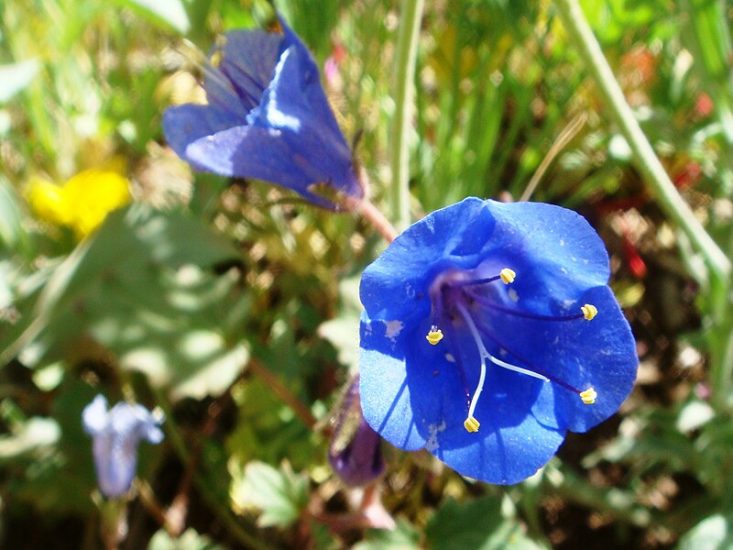
Credit Wiki Commons: https://commons.wikimedia.org/wiki/File:Phacelia-campanularia_in_Desert_Botanical_Garden_20080330.jpg
In Celtic folklore, the bluebell was known as the “fairy flower.” It was believed that when the tiny bells rang, they called fairies to gather. While enchanting, this legend came with a warning: those who heard the call risked being taken into the fairy realm. Bluebells thus represented both wonder and caution, symbolizing mystery, humility, and the unseen world. Ancient Celts also believed bluebell fields marked sacred or magical places, where the veil between worlds was thin. Even today, the bluebell’s delicate beauty evokes an air of enchantment and otherworldly charm.
23. Daisy
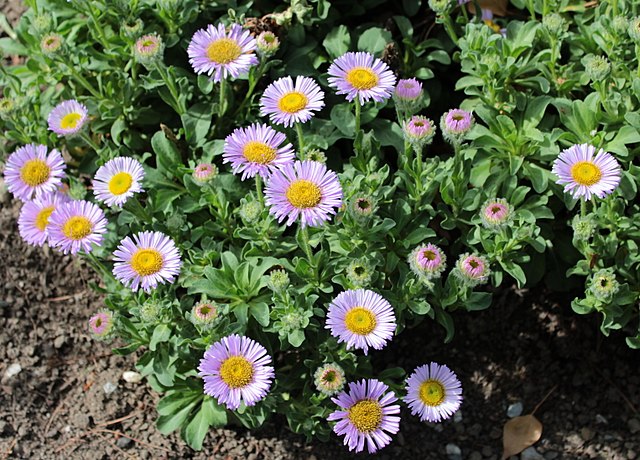
Credit Wikimedia Commons: https://commons.wikimedia.org/wiki/File:Erigeron_glaucus_Ker-Gawl.-1F.JPG
The daisy was sacred to Freya, the Norse goddess of love, fertility, and beauty. In myths, the daisy symbolized innocence and new beginnings. The flower’s simple, cheerful appearance reflected Freya’s nurturing energy and connection to motherhood. Some stories say daisies grew where Freya’s tears fell, representing both sorrow and renewal. In later European folklore, daisies became associated with children and purity, often gifted to new mothers as blessings for fresh starts. Across cultures, the daisy remains a universal emblem of hope and renewal.
24. Clover

In Celtic mythology, the three-leaf clover represented the sacred triad of earth, sea, and sky forces believed to keep the world in balance. Druids used clovers in rituals for protection and to interpret omens. The rare four-leaf clover symbolized divine favor, with each leaf representing faith, hope, love, and luck. Over time, the clover became a symbol of Ireland itself, rooted in its ancient spiritual meanings. Its simplicity hides deep mythological importance as a charm of harmony and good fortune.
25. Cornflower
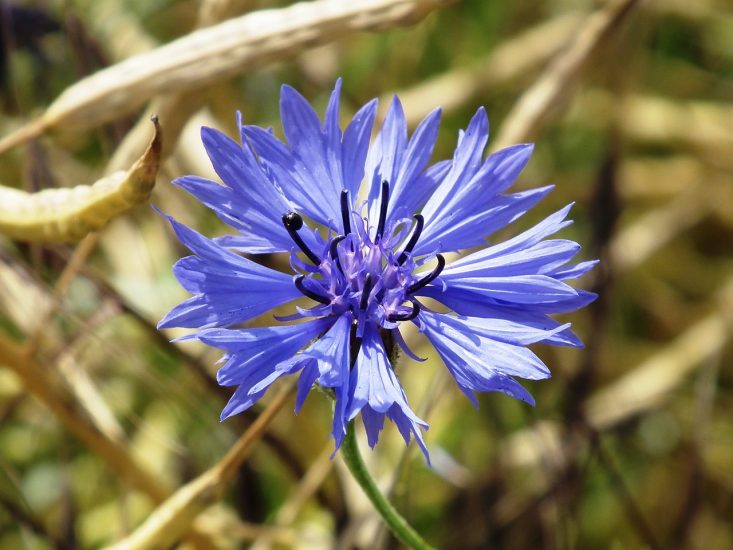
In Greek mythology, the cornflower (also known as cyanus) was linked to Cyanus, a devoted follower of Flora, the goddess of flowers. After his death, Flora transformed him into a brilliant blue cornflower as a sign of eternal devotion. The bloom came to symbolize loyalty, faithfulness, and tenderness. Warriors in ancient Greece wore cornflowers for protection in battle, while later European folklore associated the flower with romantic constancy. Its striking blue color continues to represent enduring love and sincerity.
Order Mythological Flowers with The Bouqs Co.
From the tragic self-love of Narcissus to the spiritual rebirth symbolized by the lotus, flowers in mythology have always carried deep meaning. These mythological flowers remind us that blooms are more than natural beauty, they are stories of transformation, love, and remembrance.
Across continents and centuries, people used flowers to represent life’s greatest emotions. Whether they grew from divine tears, human sacrifice, or a god’s mercy, these legends continue to shape how we see the natural world.
If any of these symbolic blooms spoke to you, you can always order flowers online to bring a touch of that ancient symbolism into your home
Shop All



